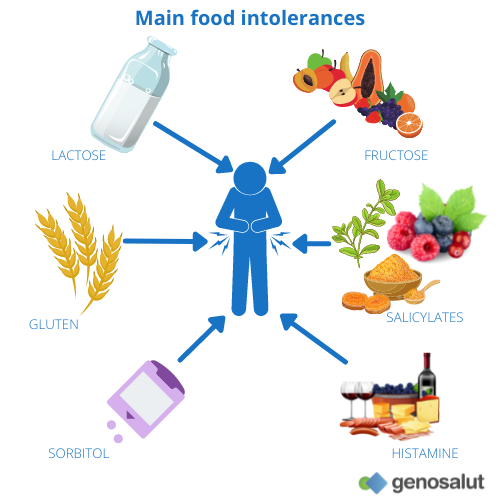Food sensitivities have become increasingly recognized in recent years as a common yet often misunderstood health issue. Many people suffer from discomforts like bloating, headaches, fatigue, or digestive issues after eating certain foods, but they may not fully understand what is causing these symptoms. If you’ve experienced any of these symptoms or suspect that your body isn’t reacting well to certain foods, it might be time to explore the possibility of food sensitivities.
In this article, we’ll help you understand what food sensitivities are, how to identify potential triggers, and offer strategies to find relief. Whether you’re just beginning to investigate food sensitivities or have been managing them for some time, this guide will help you navigate the process effectively.
What Are Food Sensitivities?
Food sensitivities refer to adverse reactions that your body has to certain foods or food components. Unlike food allergies, which cause an immune system response, food sensitivities generally involve a delayed response from the digestive system. These reactions can range from mild to severe and may take several hours or even days to manifest.
While food allergies can cause life-threatening reactions like anaphylaxis, food sensitivities are more subtle and can be difficult to pinpoint. The symptoms of food sensitivities often mimic those of other conditions, like irritable bowel syndrome (IBS), headaches, or fatigue. Common triggers of food sensitivities include dairy, gluten, soy, and certain food additives, although any food could potentially cause sensitivity in some individuals.
It’s important to distinguish between food sensitivities and other gastrointestinal issues, as they often overlap. Working with a healthcare provider to understand the root cause of your symptoms is essential for managing food sensitivities effectively.
Signs and Symptoms of Food Sensitivities
Identifying the symptoms of food sensitivities can be tricky because the signs often appear slowly and vary widely from person to person. Unlike food allergies, where symptoms appear immediately after consumption, food sensitivity symptoms may take hours or even days to manifest. This delayed reaction can make it harder to connect specific foods to discomfort.
Some common signs and symptoms of food sensitivities include:
- Bloating and Gas: One of the most common symptoms of food sensitivities is bloating, often accompanied by excessive gas. This is usually a sign that your body is struggling to digest certain foods.
- Headaches and Migraines: Certain foods, particularly those containing high levels of histamines, tyramine, or glutamates, are often linked to headaches or migraines in sensitive individuals.
- Digestive Issues: Symptoms such as constipation, diarrhea, or stomach cramps can all be indicative of food sensitivities, especially when they occur after consuming specific foods.
- Fatigue and Low Energy: If you consistently feel tired or sluggish after eating, your food choices could be affecting your energy levels. Food sensitivities, particularly to foods that are hard to digest, can lead to feelings of fatigue.
- Skin Reactions: Rashes, eczema, or acne flare-ups can also be caused by food sensitivities. Although these conditions are not always linked to food, certain foods may trigger or exacerbate skin issues in sensitive individuals.
If you notice any of these symptoms consistently after eating, it’s worth investigating the possibility of food sensitivities. However, these symptoms can also be associated with other conditions, so it’s essential to consult with a healthcare provider to rule out other potential causes.
Common Food Sensitivity Triggers

Several foods are more likely to trigger sensitivities in people. While each individual is different, the following foods are among the most common culprits:
Dairy: Lactose intolerance is one of the most prevalent food sensitivities. People who are lactose intolerant lack the enzyme lactase, which helps break down lactose, the sugar found in milk and dairy products. This leads to digestive discomfort like bloating, gas, and diarrhea.
Gluten: Gluten is a protein found in wheat, barley, and rye. Some people may experience a sensitivity to gluten, leading to symptoms like bloating, diarrhea, and abdominal pain. Unlike celiac disease, which involves an autoimmune response, gluten sensitivity doesn’t cause lasting damage to the intestine but can still result in significant discomfort.
Soy: Soy is another common food sensitivity trigger. Some individuals may experience gastrointestinal issues or skin reactions after consuming soy products, which are commonly found in processed foods, vegetarian substitutes, and certain snacks.
FODMAPs: FODMAPs (fermentable oligosaccharides, disaccharides, monosaccharides, and polyols) are a group of short-chain carbohydrates that are poorly absorbed in the small intestine. Foods that are high in FODMAPs, such as certain fruits, vegetables, beans, and dairy products, can lead to bloating, gas, and discomfort in people with food sensitivities.
Food Additives and Preservatives: Many processed foods contain additives, preservatives, and artificial sweeteners that can cause adverse reactions. Common offenders include monosodium glutamate (MSG), artificial colors, and sulfites, which can trigger headaches, rashes, or digestive issues.
Caffeine: While caffeine is widely consumed and can have beneficial effects like increased alertness, it can also lead to sensitivities. Some people experience digestive upset, jitteriness, or headaches when they consume caffeinated beverages.
Identifying the specific foods that trigger your sensitivities can be challenging, but tracking your diet and symptoms with the help of a healthcare provider can help you pinpoint potential culprits.
How to Identify Food Sensitivities
Diagnosing food sensitivities involves a combination of tracking your symptoms, eliminating potential triggers, and testing different foods to see how your body reacts. There are a few approaches you can use to identify your sensitivities:
Elimination Diet: An elimination diet involves removing common food triggers from your diet for a period of time (usually 2–4 weeks) and then reintroducing them one at a time. By observing how your body reacts to each food, you can identify potential sensitivities. It’s important to work with a healthcare provider or dietitian when following an elimination diet to ensure you’re still getting the necessary nutrients.
Food Sensitivity Testing: Some healthcare providers offer food sensitivity tests that claim to measure your body’s response to certain foods through a blood sample. While these tests may be helpful in identifying sensitivities, they are not always definitive and should be interpreted with caution. It’s best to use them in conjunction with other methods, such as an elimination diet.
Symptom Tracking: Keeping a detailed food diary that includes everything you eat and drink, along with notes on how you feel afterward, can help you detect patterns and identify possible food triggers. Recording your symptoms regularly will provide valuable information for your healthcare provider.
Consulting a Professional: If you’re struggling to pinpoint food sensitivities on your own, it can be helpful to consult with a dietitian or healthcare provider who specializes in food sensitivities. They can guide you through the process of identifying your triggers and provide support in managing your symptoms.
Finding Relief from Food Sensitivities
Once you’ve identified your food sensitivities, managing them becomes much easier. The key to finding relief lies in making informed food choices and adopting strategies that support your digestive health. Here are some tips to help you manage food sensitivities and reduce symptoms:
Eliminate Trigger Foods: The most effective way to prevent symptoms is to avoid the foods that trigger your sensitivities. Once you’ve identified your triggers, make sure to carefully read ingredient labels and be mindful of what you eat, especially when dining out or purchasing packaged foods.
Consider Probiotics: Probiotics are beneficial bacteria that help support a healthy gut. They can be particularly helpful for individuals with food sensitivities, as they can improve digestion and reduce bloating and gas. Talk to your doctor about incorporating probiotics into your diet.
Digestive Enzymes: Some people with food sensitivities find relief from digestive discomfort by taking digestive enzyme supplements. These enzymes can help break down certain foods and ease symptoms like bloating and gas.
Manage Stress: Stress can exacerbate food sensitivity symptoms, as it affects your gut health. Practicing relaxation techniques such as meditation, yoga, or deep breathing exercises can help reduce the impact of stress on your digestive system.
Maintain a Balanced Diet: While avoiding trigger foods is important, it’s equally essential to maintain a balanced and nutrient-dense diet. Make sure you’re getting a wide range of vitamins, minerals, and fiber from whole foods, such as fruits, vegetables, lean proteins, and healthy fats, to support overall health.
If you continue to experience symptoms despite eliminating trigger foods, it’s important to seek medical advice. Your healthcare provider may recommend additional tests or suggest other strategies to help manage your sensitivities.
Conclusion: Navigating Food Sensitivities with Confidence
Food sensitivities can significantly impact your quality of life, but with the right strategies, you can identify triggers, manage your symptoms, and live a healthier, more comfortable life. Understanding your body’s unique needs and being proactive in managing your diet is key to finding long-term relief. Whether it’s through an elimination diet, professional guidance, or lifestyle adjustments, there are effective ways to minimize discomfort and improve your overall well-being.
If you suspect you have food sensitivities, take the time to investigate your symptoms, track your reactions, and consult with a healthcare provider. The path to finding relief may require patience, but with the right approach, you can take control of your health and feel your best every day.
